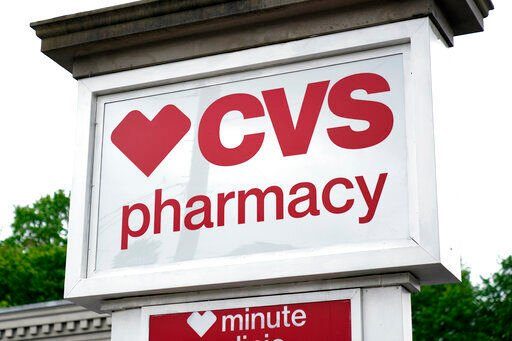CVS Health thumped second-quarter expectations and hiked its full-year forecast as growing prescription claims and COVID-19 test kits sales countered a drop in vaccinations.
A longer cough cold and flu season also brought in more business, as claims in CVS Health’s biggest segment, pharmacy benefits management, rose about 4%. Pharmacy sales at the company’s established drugstores climbed more than 7%.
CVS Health’s overall revenue topped $80 billion, a jump of 11%, even as the company said COVID-19 vaccinations fell compared with the same period last year, when many people were still getting their initial rounds of protection from the virus.
CVS Health didn’t say how many vaccinations it doled out in the quarter. That business could pick up again later this year when customers start seeking COVID-19 vaccination boosters for the winter.
The company also could see gains in the back half of the year from treating more COVID-19 patients. Last month, the Food and Drug Administration said pharmacists can begin screening patients to see if they are eligible for Pfizer’s COVID-19 treatment Paxlovid and then prescribe the medication.
CVS operates one of the nation’s largest drugstore chains with nearly 10,000 retail locations. It also runs prescription drug plans for big clients like insurers and employers through a large pharmacy benefit management business. It also provides health insurance for more than 24 million people through its Aetna arm.
Quarterly net income climbed 6% to $2.96 billion in the second quarter, and adjusted earnings totaled $2.40 per share.
Analysts predicted earnings of $2.18 per share on $76.41 billion in revenue, according to FactSet.
Total operating costs for the company rose 11%, to more than $76 billion.
CVS Health now expects to post adjusted earnings of $8.40 to $8.60 per share this year. That represents a 20 cent hike at both ends of the range from its previous forecast.
Industry analysts have been projecting earnings of $8.35 per share, according to FactSet.
Shares of CVS Health Corp., based in Woonsocket, R.I., climbed nearly 4% before the opening bell.


